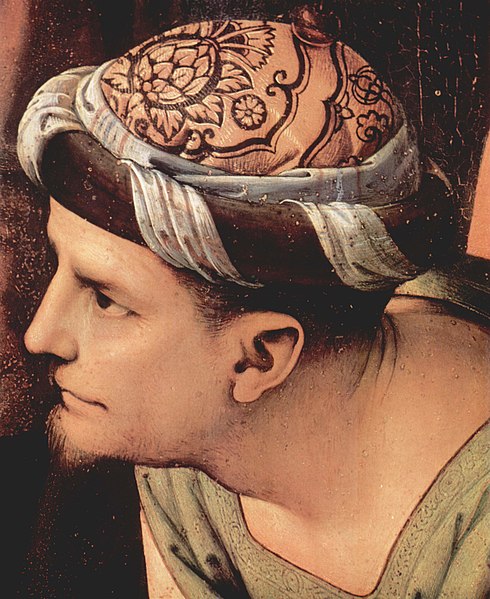Joseph of Arimathea
All that is known for certain concerning him is derived from the canonical Gospels. He was born at Arimathea — hence his surname — “a city of Judea” (Luke, xxiii, 51), which is very likely identical with Ramatha, the birthplace of the Prophet Samuel, although several scholars prefer to identify it with the town of Ramleh. He was a wealthy Israelite (Matt., xxvii, 57), “a good and a just man” (Luke, xxiii, 50), “who was also himself looking for the kingdom of God” (Mark, xv, 43). He is also called by St. Mark and by St. Luke a bouleutes, literally, “a senator”, whereby is meant a member of the Sanhedrin or supreme council of the Jews. He was a disciple of Jesus, probably ever since Christ’s first preaching in Judea (John, ii, 23), but he did not declare himself as such “for fear of the Jews” (John, xix, 38). On account of this secret allegiance to Jesus, he did not consent to His condemnation by the Sanhedrin (Luke, xxiii, 51), and was most likely absent from the meeting which sentenced Jesus to death (cf. Mark, xiv, 64).

Glastonbury Thorn Tree on the left. The ‘Glastonbury Thorn’, (also referred to as the ‘Holy Thorn’) is a type of Hawthorn found in England and believed to originate from Palestine/Middle East. The tree is said to have been brought by Joseph Arimathea on his visit to England. Wherever Joseph travelled preaching through the UK, he carried a staff which he had acquired in Palestine. Legend tells that he visited the Isle of Avalon, (Glastonbury) Somerset, which at one time was surrounded by water. Tired from travelling he sought rest and sat down upon ‘Weary-all Hill’ now called ‘Worral Hill’. Joseph stuck the staff into the ground, it took root and a tree grew. Within the area there are now trees that are said to have been grown from the original cuttings one in the grounds of ‘Glastonbury Abbey’ and another in the churchyard of St. John’s Church. The tree blossoms at Christmas and Easter.
Photo by Ken Grainger.
The Crucifixion of the Master quickened Joseph’s faith and love, and suggested to him that he should provide for Christ’s burial before the Sabbath began. Unmindful therefore of all personal danger, a danger which was indeed considerable under the circumstances, he boldly requested from Pilate the Body of Jesus, and was successful in his request (Mark, xv, 43-45). Once in possession of this sacred treasure, he — together with Nicodemus, whom his courage had likewise emboldened, and who brought abundant spices — wrapped up Christ’s Body in fine linen and grave bands, laid it in his own tomb, new and yet unused, and hewn out of a rock in a neighbouring garden, and withdrew after rolling a great stone to the opening of the sepulchre (Matt., xxvii, 59, 60; Mark, xv, 46; Luke, xxiii, 53; John, xix, 38-42). Thus was fulfilled Isaiah’s prediction that the grave of the Messias would be with a rich man (Is., liii, 9). The Greek Church celebrates the feast of Joseph of Arimathea on 31 July, and the Roman Church on 17 March. The additional details which are found concerning him in the apocryphal “Acta Pilati”, are unworthy of credence. Likewise fabulous is the legend which tells of his coming to Gaul A.D. 63, and thence to Great Britain, where he is supposed to have founded the earliest Christian oratory at Glastonbury. Finally, the story of the translation of the body of Joseph of Arimathea from Jerusalem to Moyenmonstre (Diocese of Toul) originated late and is unreliable.
FRANCIS E. GIGOT (Catholic Encyclopedia)










